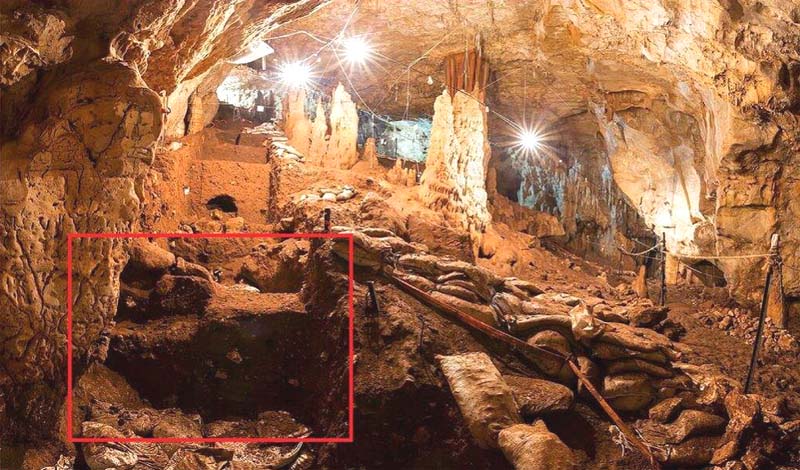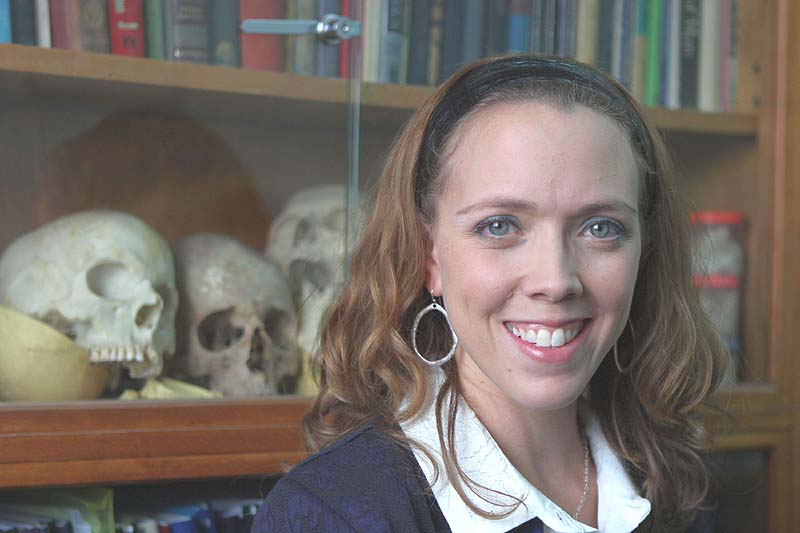Photo Credit: Prof. Israel Hershkovitz

Who were the Aurignacians who lived in the Levant 40,000 years ago? Until recently, little evidence, human remains or otherwise, had been found to possibly tell their story.
Now, researchers from Tel Aviv University, the Israel Antiquities Authority and Ben-Gurion University have found that these culturally sophisticated humans migrated from Europe to the Levant some 40,000 years ago—shedding light on a significant era in the region’s history.
‘);
_avp.push({ tagid: article_top_ad_tagid, alias: ‘/’, type: ‘banner’, zid: ThisAdID, pid: 16, onscroll: 0 });
The Aurignacian culture first appeared in Europe some 43,000 years ago and is known for having produced bone tools, artifacts, jewelry, musical instruments and cave paintings.
For years, researchers believed that modern man’s entry into Europe led to the rapid decline of the Neanderthals, either through violent confrontation or wresting control of food sources. But recent genetic studies have shown that Neanderthals did not vanish but rather assimilated into modern human immigrant populations. This new study adds further evidence to substantiate this theory.

Through cutting-edge dental research on six human teeth discovered at Manot Cave in the western Galilee, Dr. Racheli Sarig of TAU’s School of Dental Medicine, and Dan David Center for Human Evolution and Bio-History Research, in collaboration with Dr. Omry Barzilai of the Israel Antiquities Authority and colleagues in Austria and the US, have shown that Aurignacians arrived from Europe in modern-day Israel some 40,000 years ago – and these Aurignacians were comprised of both Neanderthals and Homo Sapiens.
A study on the new findings was published in the Journal of Human Evolution (The dental remains from the Early Upper Paleolithic of Manot Cave, Israel).
“Unlike bones, teeth are preserved well as they are made of enamel, which is the substance in the human body most resistant to the effects of time,” Dr. Sarig explained. “The structure, shape, and topography – surface bumps – of the teeth provided important genetic information. We were able to use the external and internal shape of the teeth found in the cave to associate them with typical hominin groups: Neanderthal and Homo sapiens.”

The researchers performed in-depth lab tests using micro-CT scans and 3D analyses on four of the teeth. The results surprised the researchers: two teeth showed a typical morphology for Homo sapiens; one tooth showed features characteristic of Neanderthals and the last showed a combination of Neanderthal and Homo sapiens features.
This combination of Neanderthal and modern human features has so far only been found in European populations from the early Upper Paleolithic period, suggesting their common origin.
“Following the migration of European populations into this region, a new culture existed in our region for a short time – approximately 2-3,000 years – and then disappeared for no apparent reason,” Dr. Sarig said. “Now we know something about their makeup.”
“To date, we have not found any human remains from this period in Israel,” noted Prof. Israel Hershkowitz, head of the Dan David Center, “So the group remains a mystery. This groundbreaking study brings for the first time the story of the population responsible for some of the world’s most important cultural contributions.”
‘);
_avp.push({ tagid: article_top_ad_tagid, alias: ‘/’, type: ‘banner’, zid: ThisAdID, pid: 16, onscroll: 25 });



